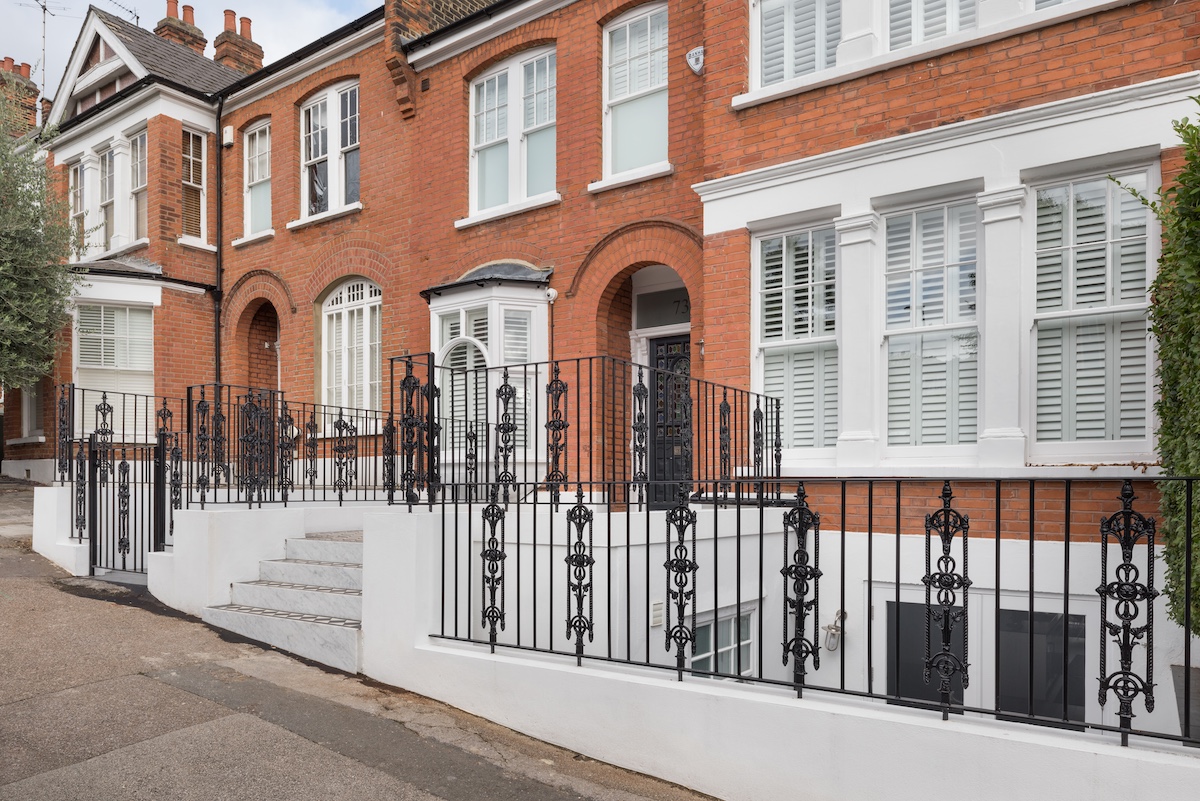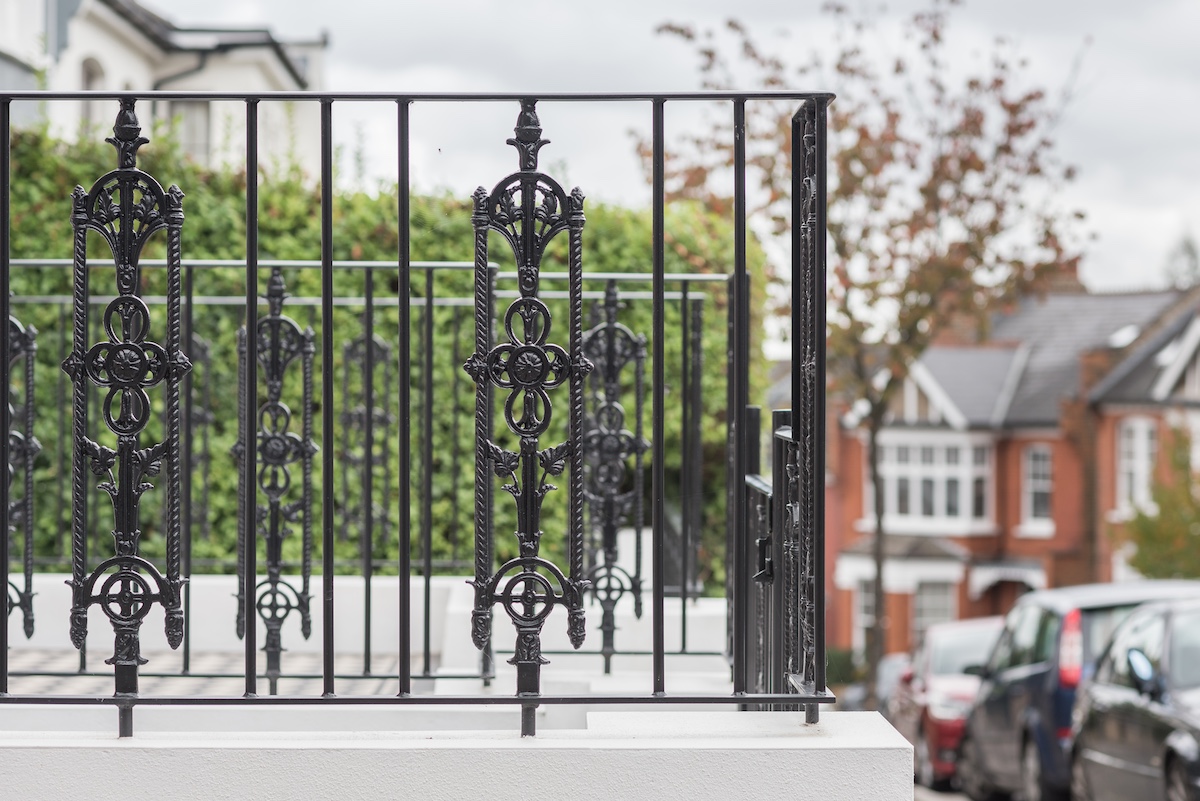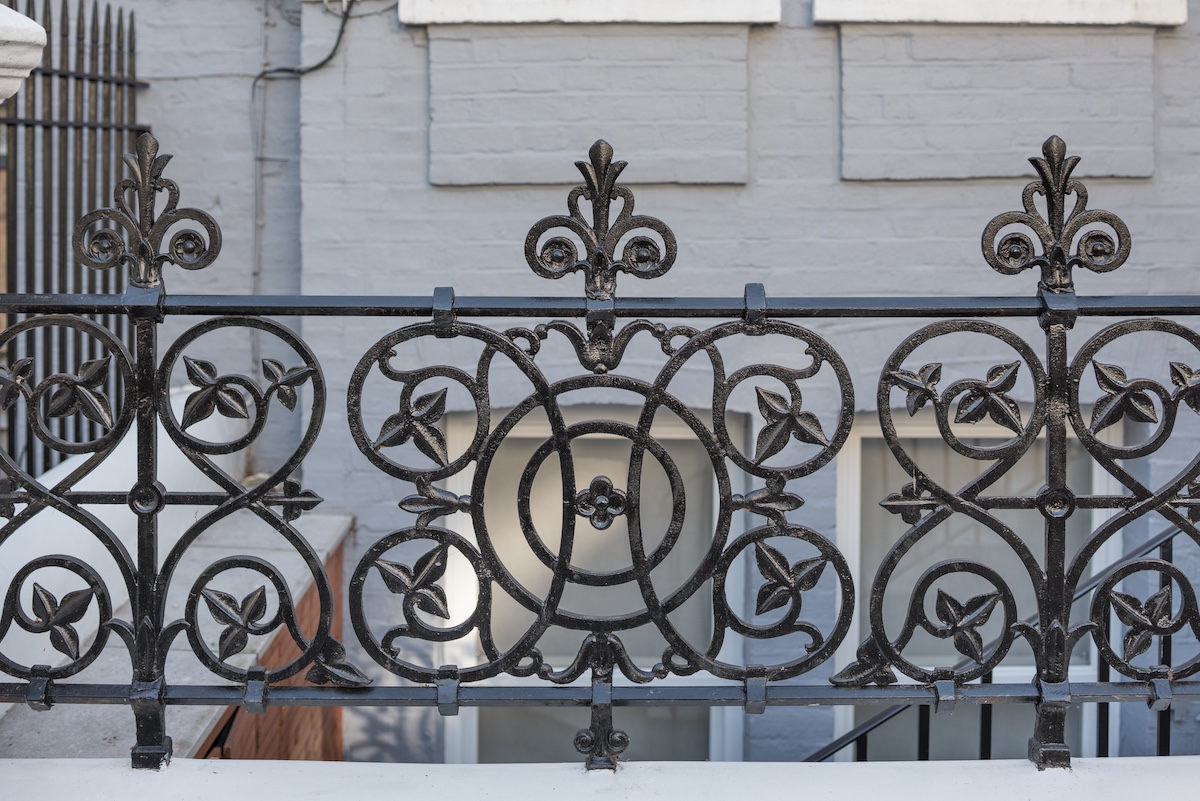Why Are Old Railings Black?
22nd February 2024

Here in the UK, metal railings, gates and balusters outside homes and other public buildings are almost always black. But, if you scratch below the surface, you’ll find most of this metalwork has a much more colourful past.
Deep Blue
Mid-century metalwork was typically painted to help protect it from corrosion. By the 1600s, the most commonly used paint colour was blue. It’s speculated that this was to simulate the colour of iron when it is heated to around 290 degrees Celsius. During this period, the blue colouring was achieved by combining oil with a pigment called Smalt (ground glass given its blue colour through the use of cobalt).
The trend for blue metalwork continued throughout the Georgian period supported by the discovery and development of Prussian blue. Stone colours were another popular choice for many Georgians and in some cases several coats were applied to simulate the texture and look of stone on the metalwork. By the close of the century, however, there was a shift away from these palettes towards a new colour.
Going Green
So called Invisible Green paint was a favourite of the influential landscape gardener Humphry Repton was used in stately gardens and around garden squares to help blend ironwork with the vegetation.
Brunswick Green paint was also applied to railings around buildings, simulating the patina that forms on more expensive metals such as copper and bronze as they oxidise over several years. Bronze Green took this process one step further, adding bronze or gold dust to the paint to give it a metallic sheen.
Given its colourful past, when and why was it decided that the standard colour for all exterior metalwork should be black?
Paint It Black
Many people believe this change came as a result of the death of Prince Albert in 1861. It has been suggested that railings across the country were painted black in sympathy with the Queen. On closer inspection, however, it seems unlikely that this is true. During the Victorian period, black paints took a considerable time to dry increasing the risk of damaging passer-by’s clothes. Evidence shows that most railings remained green through the Edwardian period and beyond. Indeed, a survey of Queen Victoria’s own private retreat failed to show any evidence of black railings.
The more likely explanation as to why old railings are black was the development of alkyd-resin black paints in the 1930s. As railings were re-established following the Second World War, many were painted with the new, fast-drying black paint, which also helped to mask dirt build-up from the polluted air. Over time, many existing railings were painted to match, leading to the common appearance found today.


What Colour Can I Paint My Metalwork?
This will really depend on whether your property is listed or in a conservation zone – in these cases you are likely to need planning permission for any changes to the front exterior of the property. One of the challenges of conservation is picking what period to restore a property to. For example, most roman statues were originally painted vibrant colours but there would be outrage if we suggested repainting them today.
For this same reason, many planning officers may prefer metalwork on listed or conservation zone properties to be painted black to maintain consistency with surrounding homes. This is particularly true when the metalwork forms part of a connected run of railings. For example, Islington council’s design and conservation guide for ironwork states:
“Whatever the debates of authenticity of colour, the Council considers that in uniform terraces with continuous runs of railings, the railings should be painted the same colour. If the predominant colour is black, then a different colour should only be considered if a comprehensive repainting scheme is possible.”
Where ironwork is separated, there may be more room for flexibility. At the very least, most officers will be willing to consider shades of Brunswick Green, as darker greens are usually preferred. If you want to use other colours you may well have to provide evidence that the shade was used on the original property. In some cases, it may be possible to check this by looking at areas where the paint has flaked to reveal earlier coats.
Of course, if you’re located outside a conservation area then you have greater freedom to experiment with one of the many historic shades, or to try something completely new.
We offer a powder coating service for all our staircases, balconies, steel gates and railings and can paint any of our pieces to suit your particular preferences. Take a look at the railings we offer, either as complete runs, or separately within our cast iron store. Then submit a quote request or order. If you need any help, simply phone or call us and we’ll be happy to offer advice.





